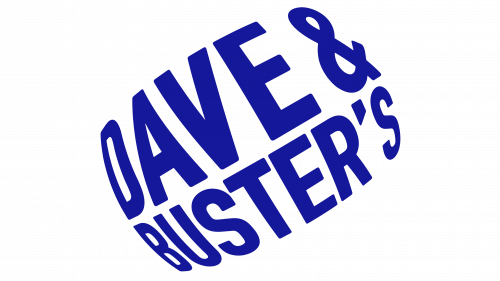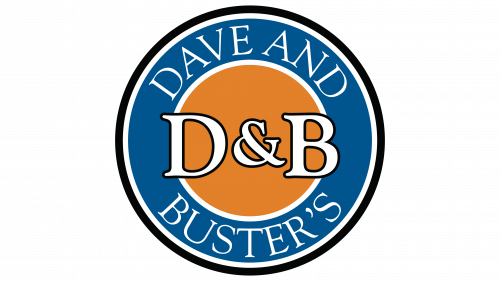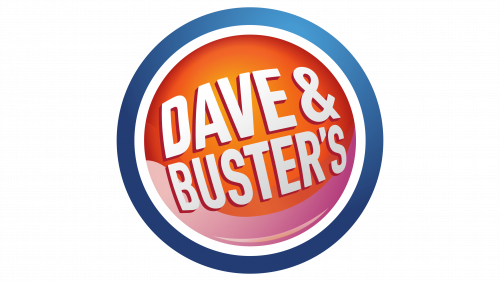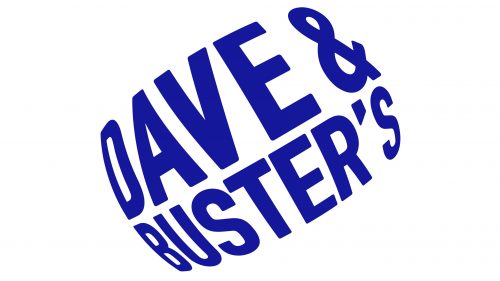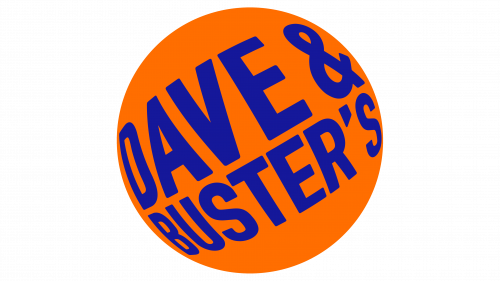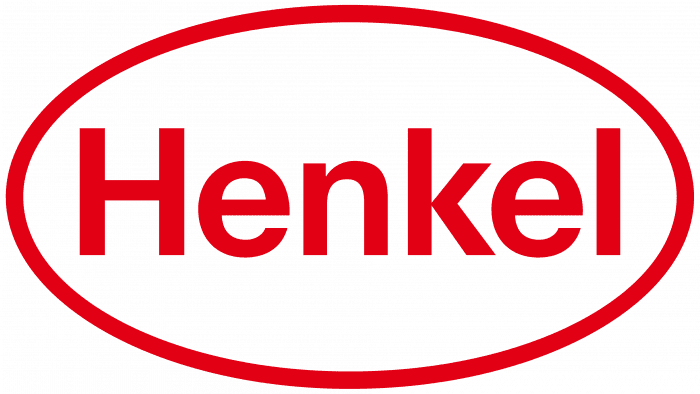The Dave and Buster’s Logo highlights the progressive nature of the venues, where guests can enjoy gourmet restaurant dishes, relax at the bar, play bowling, billiards, or arcade games. The emblem captures the fun atmosphere, attracting those who love a great time.
Dave and Buster’s: Brand overview
In the late 1970s, two businessmen named David Corriveau and James “Buster” Corley met in Little Rock, Arkansas, beginning Dave & Buster’s history. Corley oversaw the adjoining “Buster’s” restaurant, while Corriveau handled the lucrative “Cash McCool’s” gaming parlor. Both observed that during the evening, their patrons frequently switched between venues.
This observation inspired the notion of fusing the two ideas—a restaurant and a game parlor—under one roof. Corriveau and Corley concluded that this combination could produce an original adult entertainment area.
This concept was realized in 1982 when the first location was established in Dallas, Texas. The 40,000-square-foot space had a bar, a full-menu restaurant, and a sizable gaming section with various arcade games and simulators. Tourists and locals alike soon began to embrace the idea.
Due to the success of Corriveau and Corley’s initial revenue, they decided to expand. In 1985, they established the second location in Houston, Texas. This location was considerably bigger than the previous one, with more entertainment features like dartboards and pool tables.
Investors started noticing the enterprise by the end of the 1980s. Edison Brothers Stores, Inc. purchased a majority interest in the company in 1989 to finance further growth.
The firm had fast expansion in the 1990s. The company’s first location outside of Texas opened in Philadelphia, Pennsylvania, in 1991. This introduction showed that the concept could work in various parts of the nation.
A milestone in the company’s growth was reached in 1995 when it went public. The initial public offering (IPO) on NASDAQ raised substantial funding for future expansion.
In 1997, the company opened its first location outside the United States, in Birmingham, England. Although this international growth was a bold step, it highlighted the difficulties in translating the idea to new markets and cultural contexts.
The firm unveiled a brand-new idea in 2000 under the moniker “D&B Million Dollar Midway.” As part of this effort, game rooms were updated with more contemporary and engaging games, which helped draw in a younger clientele.
A turning point in the company’s history occurred in 2006 when Wellspring Capital Management, an investment firm, acquired the enterprise for $375 million. This transaction changed the company’s core mission while changing its leadership.
2010 saw another ownership shift for the business when Oak Hill Capital Partners paid $570 million to purchase the enterprise. The new owners maintained the expansion plan and opened new locations nationwide.
The mobile app was released in 2011. It enabled users to keep track of their gaming points and get exclusive deals, a critical phase in the digitalization of the business.
The firm went public again in 2014, holding an initial public offering (IPO) on the NASDAQ. This raised extra funding for the renovation and development of existing sites.
For the company, 2016 was an innovative year. The firm launched several VR attractions and started incorporating virtual reality into its gaming zones. This enhanced the company’s standing as a pioneer in the entertainment industry and drew in new customers.
With the debut of its first national television advertising campaign in 2018, the enterprise saw a notable rise in national brand awareness.
The 130th store opened its doors in 2019, a testament to its ongoing expansion. The same year, the business started experimenting with a new venue model for smaller towns.
Despite obstacles on a global scale, the company kept up its adaptation to the shifting market conditions in 2020. The business expedited the adoption of digital technology by releasing an upgraded mobile app with improved features, such as a contactless menu and the option to order food and drinks straight to the arcade games. This invention greatly enhanced customer service effectiveness and enhanced the user experience.
In 2021, the enterprise presented a new concept of smaller-format locations aimed at suburbs and small towns. This approach aimed to increase the brand’s visibility in new countries and adjust to shifting consumer tastes. The new format’s initial locations were inaugurated in several US states and yielded encouraging outcomes.
The firm paid $835 million to acquire the Main Event Entertainment chain in 2022, marking a substantial acquisition. Through this acquisition, the organization was able to fortify its market position and increase its footprint in the family entertainment center industry. Main Event’s incorporation within the company’s organizational structure created new chances for brand-to-brand synergy and best-practice sharing.
In 2023, the enterprise introduced a new range of virtual and augmented reality games in its locations, continuing to innovate in the gaming industry. By providing guests with exceptional entertainment options, these cutting-edge technologies strengthened the company’s standing as a pioneer in interactive entertainment.
Additionally, the firm introduced a cutting-edge loyalty program that uses AI technologies to boost client interaction and personalize offers. This effort resulted in higher visit frequency and average check amounts.
At the beginning of 2024, the organization announced ambitions to expand internationally, focusing on countries in Asia and Europe. Sending franchise agreements in many countries initiated a new stage in the brand’s worldwide expansion.
Meaning and History
What is Dave & Buster’s?
It is an American restaurant and entertainment business that combines dining with arcade games, sports viewing, and various entertainment activities. Each venue features a full-service restaurant serving various food and beverages and a large gaming area with a wide selection of video games, interactive simulators, and redemption games where players can win tickets to exchange for prizes. The company offers a sports bar with multiple screens for watching sporting events. The brand is known for creating a fun and exciting atmosphere for adults and families alike.
1982 – 2014
This classic logo evokes nostalgia among long-time fans of Dave & Buster’s. Its design resembles a rondel: a large orange circle within a blue ring. A thin white line separates the two parts, creating visual balance. The outer edge is outlined in black, making the emblem bold and noticeable against any background.
The white abbreviation “D&B” is at the center, representing the brand’s shortened name. The designers intentionally made it wider than the orange circle to illustrate that Dave & Buster’s goes beyond the usual boundaries. It’s an unconventional chain that combines restaurants, bars, and arcade game rooms under one roof.
The company’s full name is in a thin font with long, pointed serifs in the wide blue ring. Its white color and dynamic shape create an illusion of lightness, reflecting the comfortable atmosphere of restaurant-entertainment complexes, where you can enjoy a great meal and play your favorite arcade games.
The contrast between the two distinct typefaces makes the emblem appealing. The emphasis is on the abbreviated name, as it feels more informal and better conveys the concept of Dave & Buster’s. Every detail of the logo—from the distinct fonts to the varied color palette—reflects the company’s connection to leisure and entertainment.
2013 – 2020
This logo debuted in 2013, adorning the exterior of a D&B venue in Dallas. It wasn’t until the end of 2014 that it became the official symbol of the brand, fully replacing the old two-dimensional logo and marking a new chapter in the history of the entertainment centers.
To ensure that customers could easily recognize the company by its emblem, the designers retained several original elements, including the blue ring, the light lettering, and the large orange circle. However, these elements now feel entirely different due to their altered shape and texture.
- The orange remains only at the circle’s center, while the edges feature a red gradient. This palette has made it emotionally rich, echoing visitors’ vivid experiences at Dave & Buster’s. The gradient gives the circle a three-dimensional appearance as if it were a sphere. A pale pink wave that wraps around the entire lower portion further enhances the sense of depth. The sphere evokes associations with the variety of games found at D&B locations.
- The blue border, in the form of a wide ring, also features a smooth gradient, giving it a shiny appearance. This texture reflects the modernity of the entertainment centers and their desire to appeal to a younger generation of customers who enjoy a casual style. The logo’s dynamism reflects the energy of the entertainment centers and emphasizes their ongoing growth.
- The phrase “DAVE & BUSTER’S” is now placed not in the blue ring but within the red-orange circle. The name is positioned diagonally, showcasing the brand’s playful nature. The designers enlarged the central letters to create the impression that they are written on the side of a large sphere. The text color isn’t pure white but has a slight gray tint, making the circle and lettering glossy.
The imitation of a glossy texture highlights the chain’s modernity, while the letters’ uneven size enhances the three-dimensional effect. Each glyph has a one-sided burgundy outline, which creates a sense of depth. This design best reflects the company’s connection to the entertainment industry, as every D&B venue includes a game room. The round emblem with a three-dimensional center and flat edges resembles a button—another reference to arcade games.
2020 – today
In 2020, the designers significantly simplified the logo to align with a modern minimalist style. They removed all elements except the lettering, Dave & Buster’s primary identifier. Despite the changes, the designers retained the emblem’s iconic spherical shape. The text is inflated in the middle, creating the illusion of depth, giving the impression that it’s placed on the convex side of an invisible sphere, as the background has no borders.
The absence of clear boundaries signals the brand’s informality, indicating that it doesn’t conform to dull standards. Its goal is to bring together fans of delicious restaurant food and exciting entertainment in one place and give them what they want. The spherical shape evokes a sense of lightness and flight, contrasting the heaviness of everyday life, which can be forgotten in the relaxing atmosphere of D&B.
The lettering is infused with invisible energy thanks to its inflated appearance and diagonal placement. Yet, it remains highly legible, as the designers used a bold font from the FF DIN family for the company’s name. This is a clear industrial-style grotesque based on DIN 1451.
The logo predominantly features a pleasing dark blue color—one of the pillars of Dave & Buster’s visual identity. On its own, it seems calm, but the entertainment center chain typically pairs blue with orange to create a striking visual contrast. This is a challenge to conservative traditions and an attempt to mimic the neon lights of arcade games.
